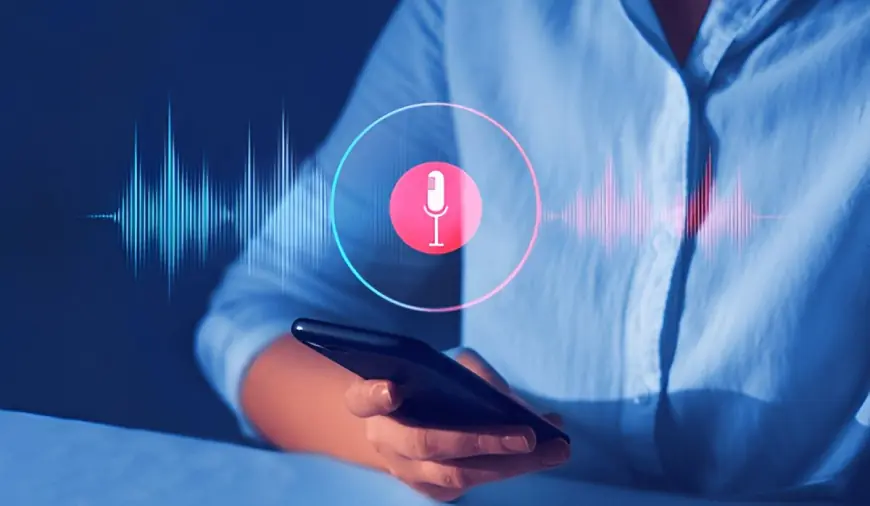AI Voice Harmonization Software: Enhancing Clarity & Connection in Call Centers
Discover how AI Voice Harmonization Software improves speech clarity, reduces miscommunication, and boosts agent confidence in call centers.

In the dynamic landscape of modern business, call centers stand as critical touchpoints, serving as the primary nexus between companies and their customers. They are the frontline of customer service, sales, and support, where every interaction, every word exchanged, profoundly shapes brand perception and customer loyalty. Yet, despite their pivotal role, call centers are notoriously challenging environments for clear communication. From the persistent hum of background noise and varying audio quality to the diverse accents and emotional states of both agents and callers, obstacles to effective understanding abound. These challenges often lead to frustration, extended call times, and ultimately, a diminished customer experience.
Enter AI voice harmonization software – a revolutionary technology poised to transform the very foundation of call center communication. Moving far beyond rudimentary noise cancellation, this sophisticated AI-driven solution intelligently processes, cleans, and optimizes vocal audio in real-time, ensuring that every word spoken is not just heard, but truly understood. By meticulously refining and clarifying speech, AI voice harmonization acts as an invisible bridge, fostering deeper connection and enhancing clarity, thereby elevating the entire call center ecosystem.
The Unseen Hurdles: Communication Challenges in Call Centers
To appreciate the profound impact of AI voice harmonization, it’s essential to first grasp the multifaceted communication hurdles inherent in call center operations:
-
Acoustic & Technical Issues: Call centers are often bustling environments. Background chatter, keyboard clicks, air conditioning hums, and even distant sirens can interfere. Furthermore, the variability in customer phone types, network strengths, and agent headset quality can introduce static, echoes, and muffled audio. These technical imperfections create inherent barriers to clear reception.
-
Linguistic Diversity & Vocal Characteristics: The globalized economy means call centers serve customers from myriad linguistic backgrounds, each with distinct accents, intonations, and speaking paces. Agents too, come from diverse regions. Beyond accents, individual vocal characteristics—such as soft speaking voices, rapid speech, sibilance (hissing 's' sounds), or plosives (harsh 'p' and 'b' sounds)—can further complicate comprehension, leading to repeated requests for clarification.
-
Emotional and Cognitive Load: Both customers and agents often operate under a degree of stress. Customers may be frustrated, anxious, or in a hurry, leading to rushed or emotionally charged speech. Agents, dealing with high call volumes, might experience vocal fatigue, leading to less articulate communication or a tendency to speak too quickly. These states can compromise attentiveness and the ability to process unclear audio efficiently.
The cumulative effect of these challenges is significant: increased average handle time (AHT), higher rates of miscommunication, agent burnout, and, most critically, a decline in customer satisfaction (CSAT) scores. Each misunderstanding represents a chipped piece in the foundation of customer trust.
Understanding AI Voice Harmonization Software: A Paradigm Shift
At its core, AI voice harmonization software is designed to intelligently filter, enhance, and standardize voice quality across all interactions, creating a consistent and optimal listening experience. Unlike simple noise suppression tools, which merely try to mute surrounding sounds, harmonization software actively analyzes vocal characteristics and acoustic environments to improve the clarity and consistency of human speech.
This technology leverages advanced algorithms, often integrating sophisticated AI speech recognition technology not just to transcribe words, but to deeply understand the nuances of human voice. It distinguishes speech from noise, identifies individual speakers, and then applies a suite of enhancements in real-time. The goal is not to alter a speaker's identity or make them sound artificial, but rather to present their voice in its clearest, most comprehensible form.
A key component often underpinning or complementing harmonization is AI voice modulation. While traditional voice modulation might involve altering pitch or tone for creative purposes (e.g., voice changers), within the context of harmonization, it refers to the subtle, intelligent adjustments made to vocal parameters to optimize clarity and presence without perceptible artificiality. This could involve dynamically adjusting volume to a consistent level, subtly flattening harsh frequencies, or enhancing softer ones to make speech more prominent against background noise.
How AI Voice Harmonization Works: A Deeper Dive
The operational mechanics of AI voice harmonization software are a testament to the power of modern artificial intelligence and digital signal processing:
-
Real-Time Audio Capture & Analysis: As a call begins, the software captures the raw audio stream from both the customer and agent. This stream is instantly fed into the AI engine.
-
Leveraging AI Speech Recognition Technology: The first crucial step involves the underlying AI recognizing and isolating speech from ambient noise. This isn't just about identifying keywords but about understanding the phonetics, prosody (rhythm and intonation), and unique vocal fingerprint of each speaker. This deep analysis, powered by intelligent AI speech recognition technology, allows the system to differentiate between meaningful communication and disruptive noise or even distinct speakers.
-
Intelligent Noise Reduction & Echo Cancellation: More advanced than traditional filters, the AI doesn't just block frequencies; it learns the characteristics of the specific background noise (e.g., a specific air conditioner hum, a colleague's distant conversation) and dynamically cancels it without distorting the voice. Simultaneously, sophisticated echo cancellation algorithms eliminate reverberation often found in office environments, ensuring the voice sounds clean and "present."
-
Dynamic Gain & Frequency Equalization (AI Speech Enhancement): This is where true AI speech enhancement occurs. The software analyzes the speaker's volume and dynamically adjusts it to a consistent, comfortable listening level, preventing sudden loud bursts or barely audible whispers. Furthermore, it performs real-time frequency equalization. This means it can boost certain frequencies vital for speech clarity (e.g., those responsible for consonant sounds) while attenuating others that might contribute to muddiness or harshness. Sibilance control (reducing harsh 's' sounds) and plosive control (softening explosive 'p' and 'b' sounds) are also critical aspects, ensuring a smoother vocal delivery.
-
Subtle AI Voice Modulation for Clarity: While not altering the speaker's identity, the AI can apply subtle forms of AI voice modulation to optimize clarity. For instance, if a speaker's typical pitch makes them difficult to understand, the software might subtly adjust certain harmonics to bring their voice into a universally clearer frequency range. Similarly, if speech is too fast, the AI might subtly add micro-pauses or slightly lengthen vowel sounds, improving intelligibility without making the speaker sound unnatural or robotic.
-
Adaptive Learning and Continuous Improvement: A hallmark of AI, these systems continuously learn from new audio data. As they process millions of minutes of conversation, they refine their algorithms, becoming more adept at distinguishing nuanced sounds, adapting to new noise profiles, and delivering ever-improving vocal clarity.
Benefits for Call Centers: Enhancing Clarity & Connection
The implementation of AI voice harmonization software yields a multitude of tangible benefits that directly impact the customer experience, agent performance, and operational efficiency:
-
Unprecedented Clarity and Comprehension:
-
Reduced Misunderstandings: By eliminating noise, echoes, and vocal inconsistencies, the software drastically cuts down on the need for repetition and clarification, making conversations flow more smoothly.
-
Improved Accessibility: Accents become easier to understand, soft speakers become audible, and rapid speech becomes more intelligible, ensuring that all customers and agents can communicate effectively, regardless of their vocal characteristics.
-
Professional Audio Quality: Call centers project a more polished and professional image when every interaction sounds crisp, clear, and consistent, regardless of the underlying technical conditions.
-
Enhanced Customer Experience (CX):
-
Faster Issue Resolution: Clearer communication leads to quicker understanding of customer needs and faster provision of solutions, significantly reducing average handle time (AHT).
-
Reduced Customer Frustration: Customers feel heard and understood, leading to lower frustration levels and a more positive perception of the support received.
-
Higher Customer Satisfaction (CSAT) & Net Promoter Scores (NPS): A seamless and effortless communication experience directly correlates with improved customer loyalty and advocacy.
-
Stronger Connection: When voices are clear and comfortable to listen to, it fosters a sense of closeness and empathy, strengthening the human connection essential for trust-building.
-
Boosted Agent Performance and Well-being:
-
Reduced Vocal Strain & Fatigue: Agents no longer need to strain to hear or be heard, reducing vocal fatigue and improving their overall well-being.
-
Lower Stress Levels: Deciphering unclear audio is mentally taxing. With crystal-clear sound, agents experience less cognitive load and stress, leading to greater job satisfaction.
-
Improved Training Efficacy: Training and quality assurance processes benefit immensely from clear call recordings, allowing for more accurate feedback and coaching.
-
Increased Confidence: Agents feel more confident when they know their voice is consistently clear and professional, leading to more assertive and effective communication.
-
Operational Efficiency and Data Quality:
-
Lower Operational Costs: Shorter call times mean agents can handle more interactions per day, while reduced call-backs due to misunderstanding further optimize resource allocation.
-
Enhanced Data for Analytics: The pristine audio output is incredibly valuable for other AI-driven applications. AI speech recognition technology used for transcription, sentiment analysis, and quality assurance performs significantly better with clean, harmonized audio, leading to more accurate insights and better decision-making.
Challenges and Future Outlook
While the benefits are clear, implementing AI voice harmonization software does come with considerations. Integration with existing PBX and CRM systems requires careful planning, and ensuring the processing doesn't introduce any perceptible latency is crucial for real-time conversations. Costs can also be a factor depending on the scale of deployment.
However, the future of this technology is exceptionally promising. We can anticipate even more sophisticated forms of AI voice modulation that can subtly adjust vocal parameters based on the detected emotional state of the caller or agent, aiming to calm or reassure without sounding artificial. Deeper integration with real-time coaching applications, leveraging enhanced AI speech recognition technology, will provide agents with instant feedback on their communication style. Personalized vocal profiles and 3D audio experiences are also on the horizon, promising an even more immersive and effective communication environment.
Conclusion
In the demanding world of call centers, effective communication is not merely a convenience; it is the bedrock of customer satisfaction and operational success. AI voice harmonization software represents a monumental leap forward, transforming chaotic audio environments into arenas of crystal-clear dialogue. By meticulously refining vocal clarity and ensuring that every word carries its intended meaning, this technology not only resolves immediate communication challenges but also fosters deeper human connection. It empowers agents, delights customers, and ultimately redefines the standard of excellence in customer service, proving that in the quest for superior customer experience, the clarity of a voice can truly be the sound of connection.
What's Your Reaction?
 Like
0
Like
0
 Dislike
0
Dislike
0
 Love
0
Love
0
 Funny
0
Funny
0
 Angry
0
Angry
0
 Sad
0
Sad
0
 Wow
0
Wow
0




















































